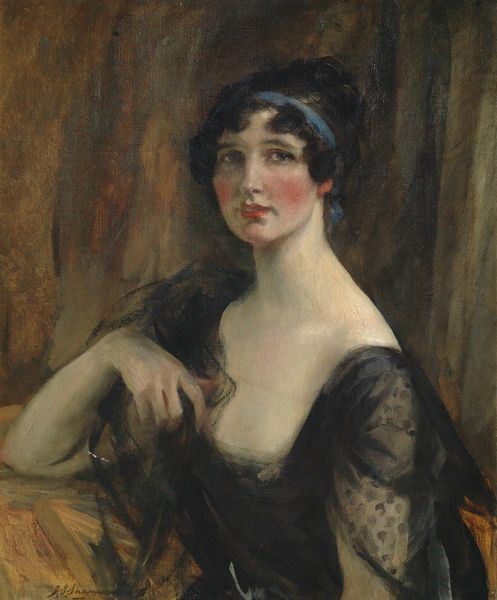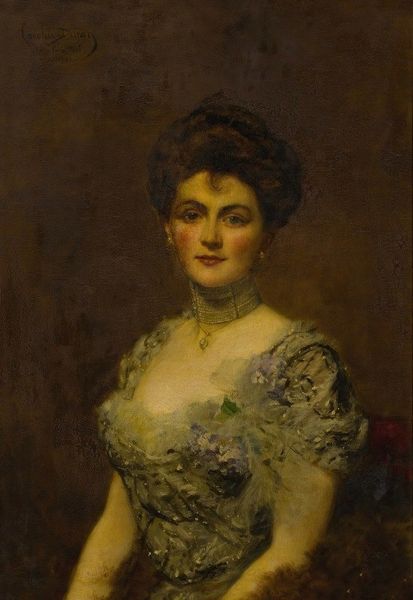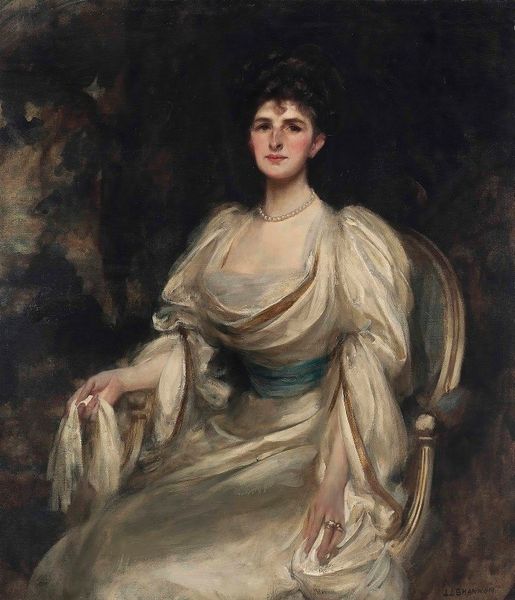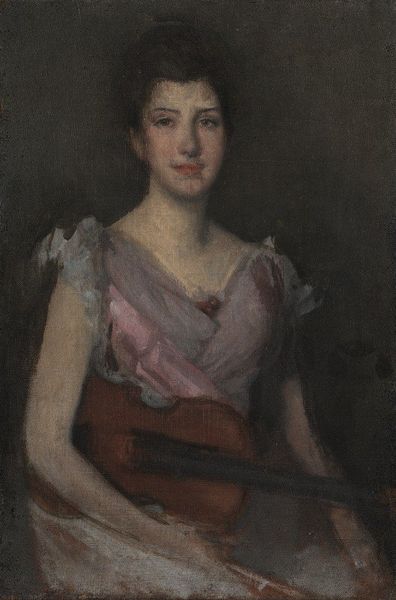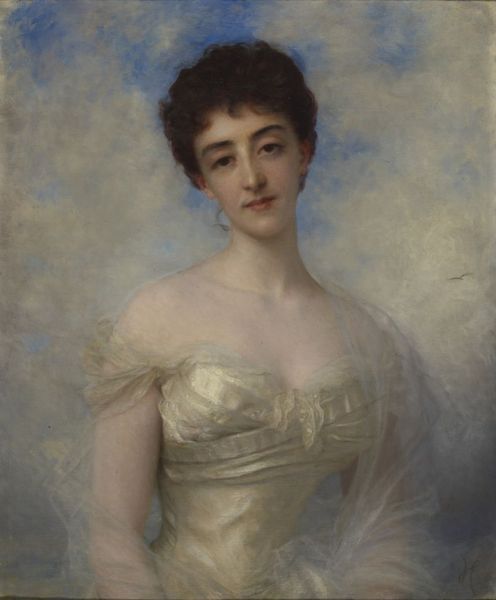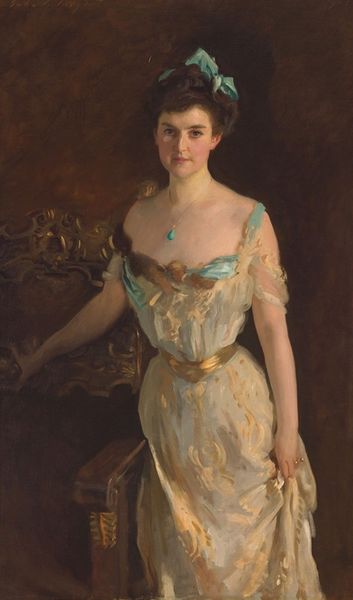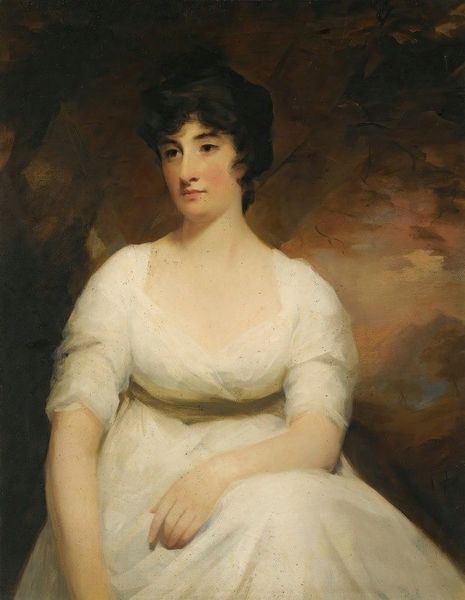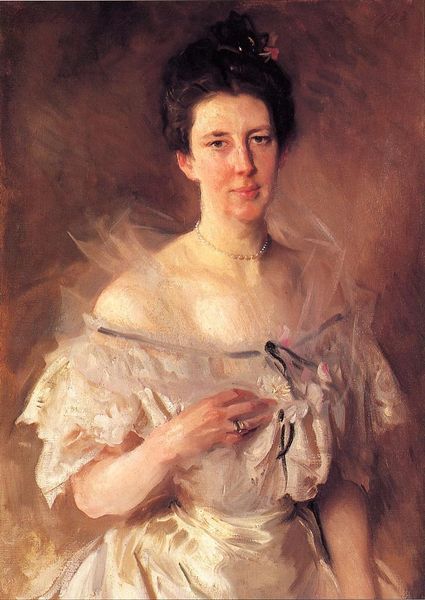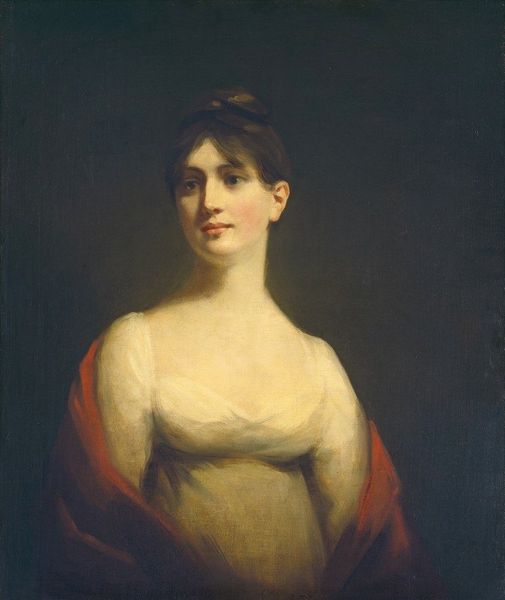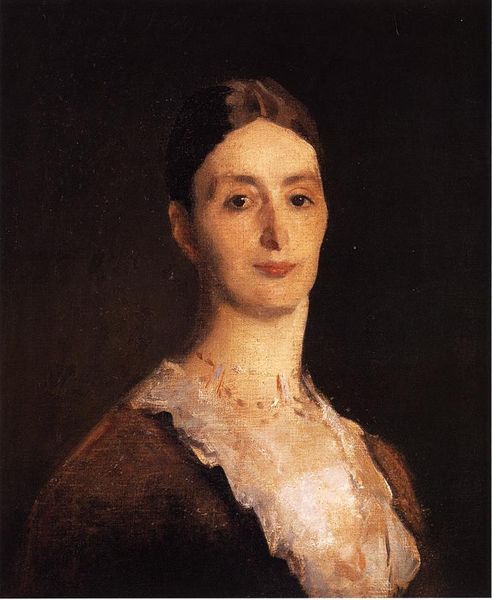
Copyright: Public Domain: Artvee
Curator: Here we have William Merritt Chase's "The Stately Model," painted around 1898. It’s an oil on canvas, fairly modest in scale. What strikes you first about it? Editor: It feels rather constrained, doesn't it? Despite the implied title, the woman looks trapped somehow. There is a lot of flesh on display but it feels claustrophobic at the same time. I immediately want to know about her life and why she is here. Curator: Note Chase's rapid, almost sketch-like brushwork in the drapery. He seems less concerned with rendering the subject literally, and more with capturing the fleeting effects of light on the delicate lace trim. Consider the production process itself. What would it cost this woman to pay for such an elaborate creation? Editor: Indeed. And how might her perceived "stateliness" mask the realities of late 19th-century gender and class constraints? Perhaps she performs "stateliness" for the male gaze as her financial imperative and obligation as a social duty. Curator: Chase often worked quickly, producing many portraits in a single sitting. These were sold for substantial sums to those looking to enhance their status through this sort of portrait. This commercial context of the art world seems central. The piece appears simple at first glance, yet is filled with brush strokes and layering techniques to add to the luxurious quality. Editor: Exactly. And the subtle tension between surface and interior—between the artist's vision and the sitter's self-representation—highlights the complex negotiation of power embedded in such portraiture. Curator: Right. Chase presents us not so much with an individual as with an exercise in impressionistic technique, combined with some deft use of high end products of manufacturing of the day. This canvas feels as though the main intent was simply a financial transaction. Editor: Absolutely, seeing the image this way encourages a far more nuanced exploration of female visibility in the Impressionist era. Curator: Precisely. It serves as a stark reminder of the socio-economic underpinnings of even the seemingly most straightforward of portraits. Editor: Yes, and it's important to continue those lines of inquiry, especially given the image’s historical and theoretical implications for art historians.
Comments
No comments
Be the first to comment and join the conversation on the ultimate creative platform.
